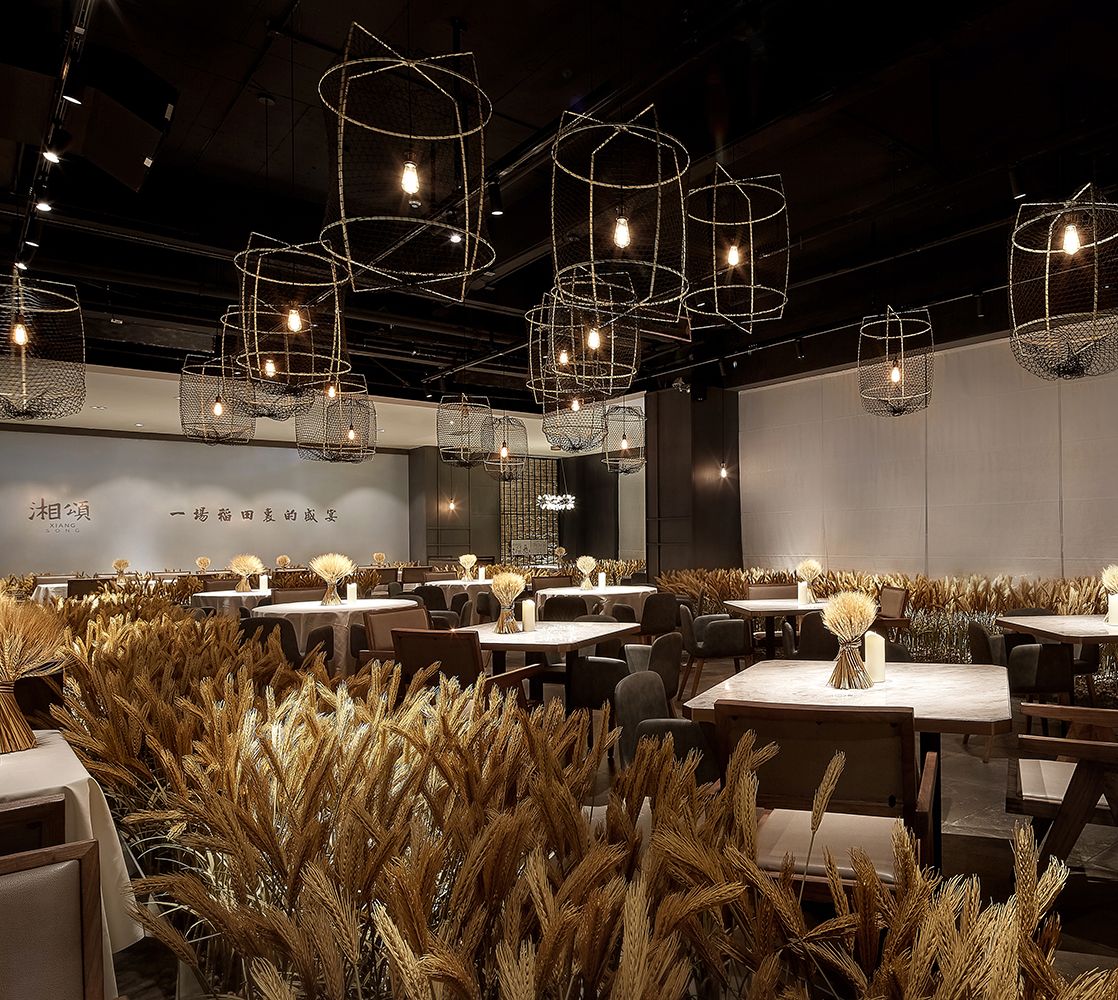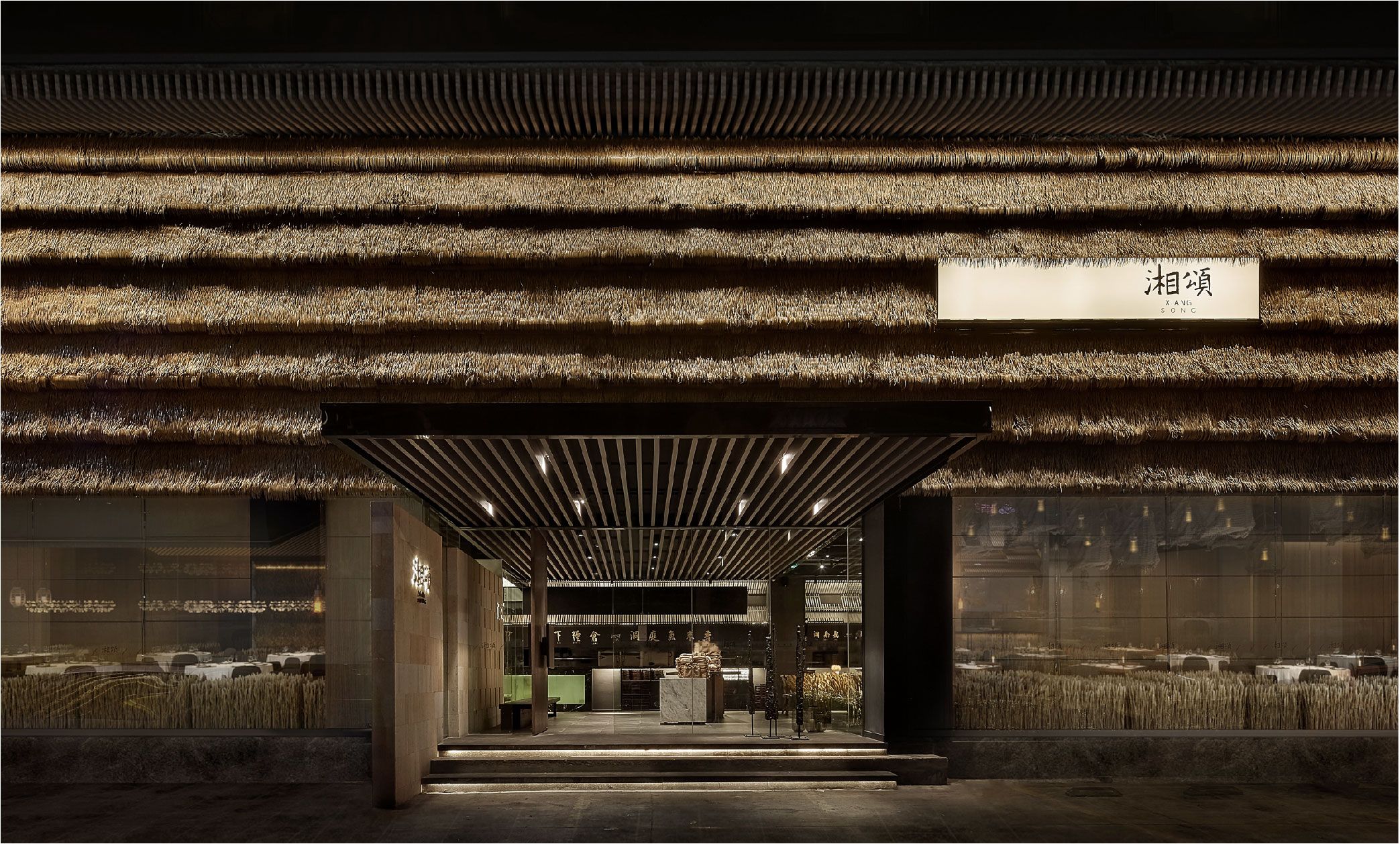
Xiang Song Restaurant by Shenzhen NOONTIDE Design Consultant Co., Ltd.
Here, we talk to Ming Cai of NOONTIDE Design Ltd about their 2018 Interior Design / Commercial Interior award-winning project, Xiang Song Restaurant.
Shenzhen NOONTIDE Design Consultant Co., Ltd. is a strategic commercial space solution design company integrating brand planning positioning, graphic visual performance and interior space design services. Built up by several industry elites from professional backgrounds, who have accumulated an abundance of experiences in depth, especially regarding catering interior. The design services range from catering to hotel, club and commercial space.
Xiang Song is a Hunan cuisine restaurant. The inspiration comes from Chinese traditional agricultural elements, which are represented by straw and rice fields. These typical elements represent Hunan cuisine, imply the restaurant uses natural materials in dishes, and praise the long history of rice farming in Hunan.
NOONTIDE Design is committed to coordinating culture with commercial space. At Xiang Song restaurant, people can feel the history of rice farming and understand its influence in China. Gold is the main color in Xiang Song — as you will notice, the door is decorated with aluminum “straw”, and golden rice fields surround the tables in order to create a harvest scene.
The theme of the Xiang Song Restaurant is “A Feast in a Rice Field”. As such, straw and rice ears were selected to be the main design elements. The principal challenges this brought is the fact that straw and rice ears are difficult to install, as they can hardly ever stand still. Added to that, these are highly combustible materials that easily grow worms.
There are aluminum straws, rice fields, and a bundle of rice ears on the table, which shows the beautiful harvest of autumn. The tableware at Xiang Song Restaurant is made of Hunan Fuling ceramics, the shape of which was improved and redesigned to integrate the landscape of Hunan. The designer also collected some cultivators and gadgets that reflect the long history of farming culture, such as Yanggu machine, sacks, kerosene lamps, and more. We have displayed the collections in a museum-like manner in order to resemble the original ecological life and to awake people’s nostalgia for this lost agricultural civilization. When people are enjoying a meal at Xiang Song, they are not only able to satisfy their appetite but they will also meet a deep spiritual appeal of nature.
The outcome we are most proud of is the fact young people in the city take photos everywhere in the restaurant, triggering their attention to traditional Chinese farming society, knowing the living environment of their ancestors, whilst loving life and cherishing food.
I still like and love design, and believe it can change life. My biggest influences and those I admire the most are too many to list, from the Italian Renaissance to the French Bauhaus, from Wright to Zaha Hadid. If I could choose any design or building to own in the world I think I would go to help Gaudi complete the Sagrada Família, because time to is too long (haha!).
I believe the advancement of technology is undoubtedly having a huge impact on design, making many impossibilities possible, but design also needs to be alert to technology, as there is the danger it could make society cold and boring.
The attitude to design is to convey information. The designer’s task is to help their intuitive ability to discover and construct new values of the world — and then to visualize them. The design not only provides an answer to existing social requirements but also explores potential social needs, in order to propose solutions.
We believe the Architecture MasterPrize is an amazing organization and awards.
Many thanks to Ming Cai for giving us so much more detail of Xiang Song to share with our readers, as well as answering some of the more personal questions we posed. Thank you!




